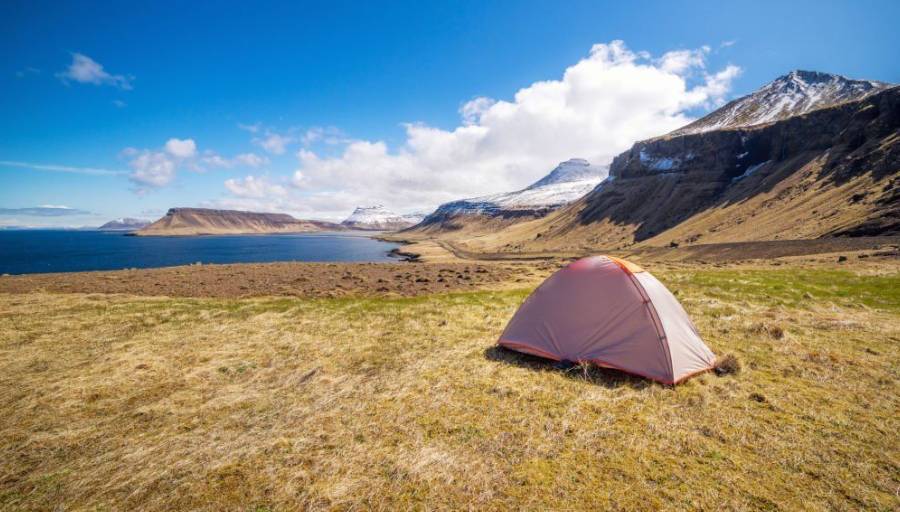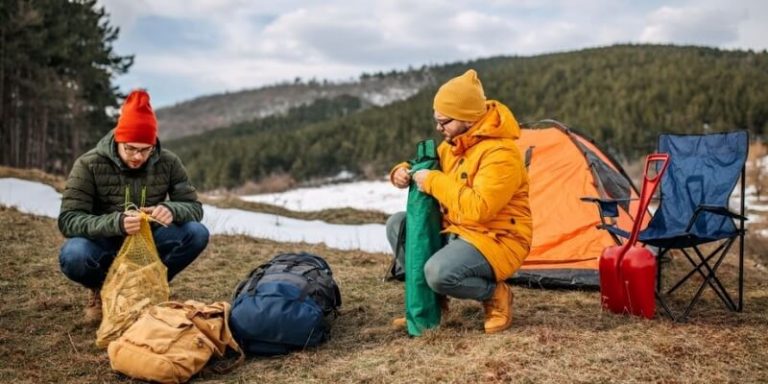Where to Pitch a Tent
When camping, it’s important to quickly identify an optimal location for pitching your tent to facilitate a speedy setup and efficient takedown. Also, it is essential to choose a spot that minimizes potential risks and ensures a safe and comfortable camping experience.
Don’t worry!
Here is our guide to finding the best spot for your tent.
Comply With Regulations and Environment
First of all, the legislation on wild camping and short camping are very strict. So it is important to respect the authorized camping areas at the campsite and always ask the owners or review the agreement carefully before setting up your tent on private land.
Camping is an opportunity to appreciate landscapes and nature. Therefore, it is crucial to minimize its impact on the environment during this practice. To do this:
- Avoid disturbing wildlife: don’t leave food for wild animals, avoid making too much noise, especially around water points where animals drink, and respect nesting sites.
- Leave no trace: pick up your rubbish, don’t destroy the flora, relieve yourself away from the camps, burn the toilet paper, bury your excrement, and leave the site as you found it.
- Respect the legislation concerning fire: check that it is legal to make a campfire on the designated site, burn as little wood as possible to leave as few traces as possible, and extinguish the fireplace before leaving.
Guidelines for Setting Up a Tent
During our first camping or hiking, we often look for the perfect place: a splendid view where we can admire the sunset and sunrise, flat ground, sheltered from the wind, and near a point of water. In practice, it is difficult to find the ideal campsite. But that does not matter, the important thing is above all your safety and comfort in sleep.
Here are the criteria to take into account when choosing the location of your tent.
Choose Flat Ground
Start by selecting a flat terrain, as this provides a stable surface that prevents rolling during sleep. Furthermore, ensure the ground is properly leveled before pitching your tent. Always bear in mind that the most important consideration is the quality of your sleep.
Indeed, the more comfortable you are, the lower the risk of dizziness while hiking. If you have no choice but to choose sloping ground, direct your head upwards and your legs downwards if possible.
Choose a Sheltered Location
If possible, locate a spot beneath tall trees. Indeed, positioning your hiking tent amidst foliage brings significant benefits, including shade, reduced dew, less wind exposure, and added warmth during the night.
Make Sure the Area is Well Drained
Choose dry ground to avoid waking up in a puddle. To do this, make sure that the ground is not spongy or within a basin or hollow. This type of terrain tends to accumulate water with the slightest rain.
Pay Attention to the Wind
The wind, in small quantities, such as a light breeze can be very useful during camping. It allows you to ventilate your shelter, avoid condensation, and limit the appearance of insects such as mosquitoes.
However, winds that are too strong can ruin your trip and even can be dangerous. For this, prefer an area sheltered from the wind and tie your tent securely. Remember that in the mountains, thermal winds in the morning and evening can be violent. So make sure to orient your tent correctly. To do this, identify the prevailing wind and position the entrance and the apse of the tent back to the wind.
Consider the Distance From the Water Point
A water point can be very practical in camping, especially if you plan a hike over several days. Indeed, water can allow you to stay hydrated, do the dishes and laundry, and cook and bathe. However, pitching your tent right next to a water point can have negative consequences:
- Presence of mosquitoes and other insects.
- Flooding of rivers associated with heavy rains or thunderstorms.
- Increased condensation can affect your comfort and your equipment.
- Disturbance of the fauna that comes to drink.
- Hazards: Like potential nocturnal visitors like bears in some places.
For these reasons, it is better to weigh the pros and cons before choosing an area close to water. In general, I prefer to set up my tent 5 or 10 minutes walk from an area of water when possible. This allows you to avoid the majority of its disadvantages while being able to enjoy its advantages.
Prefer a Discreet Place
Choosing a discreet location provides not only tranquility for yourself but also ensures minimal disturbance to the inhabitants and wildlife of the surroundings.

The Sites to Absolutely Avoid in Camping
Certain locations should be avoided during camping for the sake of your safety and a restful night’s sleep. Here’s a detailed breakdown:
- Do Not Settle in a Ravine or Depression Area: Ravines or depression areas are more prone to flooding, especially during heavy rains.
- Avoid Gorges As Much As Possible: When possible, avoid the gorges as weather conditions vary greatly. If there are no other options, prefer to camp at the highest point of the gorge to best avoid flooding. If there is a risk of heavy showers, it is better to continue looking for another place to camp.
- Refrain From Camping on Exposed Ridges or Hilltops: Exposed passages can be subject to heavy storms. It is best to avoid ridges or hilltops. If you have no choice and the weather conditions are bad, it is advisable to descend and take shelter in the foliage and sheltered from rocks and possible landslides.
- Avoid Camping Beneath a Solitary Tree: Lonely trees can attract lightning during thunderstorms. Therefore, avoid choosing a camp under a solitary tree.
- Mindful of Fragile Vegetation: Always think about your impact on the environment. To do this, avoid damaging the flora to set up your tent.
- Steer Clear of Valley Bottoms: Valley bottoms experience higher condensation, and katabatic air can persist until morning. Choose higher ground for a more comfortable camping experience.
Frequently Asked Questions
When to Look for Your Tent Location?
Don’t wait until nightfall to find a pitch for your tent. Indeed, the search can be long on some occasions and it is better to prospect in advance. To do this, identify potential places before your hike or camp. Also, don’t set up your tent too early. Indeed, in the middle of the afternoon, your camping equipment will be exposed to the sun’s UV rays and could age hastily.
Can I camp in my vehicle?
Some areas permit vehicle camping, while others do not. Check local rules and regulations. In many places, camping in vehicles is allowed only in designated areas, such as campgrounds or specific pull-off spots.
What should I do if there are no designated campsites?
If dispersed camping is allowed, choose a site that follows Leave No Trace principles. Be at least 200 feet away from water sources, set up camp on durable surfaces, and pack out all waste. Check local regulations for any specific guidelines.
Conclusion
Choosing the right location to pitch your tent is crucial for a rewarding outdoor experience. Whether you’re in a national park, a wilderness area, or on private land, understanding and adhering to local regulations is essential. By following these guidelines above, you ensure a safe & enjoyable camping trip and contribute to the preservation of natural landscapes.






